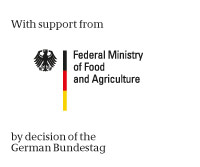Timber
 |
Timber products bind the carbon dioxide from the atmosphere that the tree has taken in over its lifetime. So, all timber products, from fibreboards to old railway sleepers, store carbon. Even old timber, that is no longer in use, is valuable: power plants transform it into heat and green electricity. The life cycle of timber products is a carbon-saving, closed substance cycle.
Demand for timber as a natural resource is high. The wood processing industry utilizes the entire tree trunk. Beams and boards are made from the trunks. Whether for furniture, roof frameworks or entire wooden houses, most of the timber goes to the construction industry.
Timber is an intelligent building material that is very well suited for structural building purposes due to its low weight and high stability. In all sizes, from residential roofing to large industrial buildings. There are no alternatives to timber as a resource. It grows and renews itself every day, but in spite of that, this is a limited resource and we need to use it wisely.
wood consumption
Germany is in a position to cover its wood requirements to a great extent from its own resources. Total wood consumption in 2010 amounted to 108 million m3 of roundwood, with supply from forests accounting for 70 million m3 and waste paper from domestic production for 45 million m3. Timber as a valuable domestic source of energy is enjoying an unexpected revival in the face of the increase in energy prices and increasing demand for CO2-neutral raw materials. In spite of these and other demands, due to the efforts of German foresters and forest owners to maintain a viable resouce base, Germany holds the largest total growing stand of timber in Europa at around 3.4 billion m3.
source: www.bmelv.de , Matthias Schwörer in "Forests for People", 2011.






